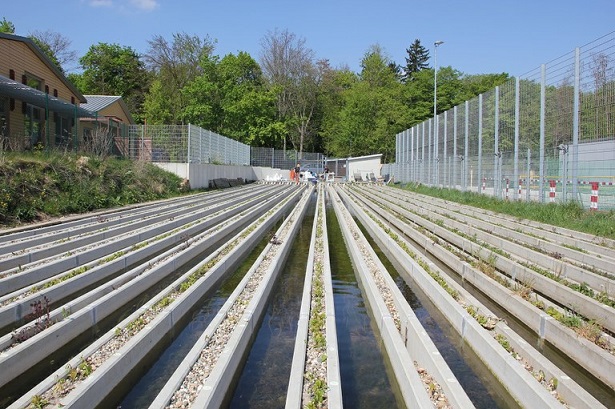In this series of posts, we present you some of the equipment and facilities we use to assess the fate and environmental impacts of chemical stressors. This time: The Landau Stream Mesocosm Facility.
The working group Ecotoxicology and Environment is hosting a state-of-the-art outdoor freshwater Stream Mesocosm Facility suitable for short- and long-term ecological and ecotoxicological experiments. The mesocosms allow for simulation of realistic and worst-case exposure events with chemical contaminants, expected to be representative for agricultural streams. Inter alia effects on stream inhabitants, such as invertebrates and macrophytes, can be assessed season-long or over whole reproductive cycles of long-lived invertebrate species.
The system consists in total of 16 independent concrete channels, each 45 m long, 0.4 m wide and filled with (optionally pre-aged) tap water of on average 0.26 m depth. In order to simulate conditions of small agricultural streams, water flow can be maintained either in a flow-through mode or in recirculation mode via pumps, usually using flow rates of 1 and up to 3 L/s, respectively.
The stream channels can be equipped with sieved topsoil, artificial or natural sediment. Moreover, in order to provide habitat for aquatic invertebrates or to study chemical retention, the channels can be equipped with different macrophyte species. Invertebrate communities can be established typically covering major functional feeding groups and trophic levels, such as shredders, grazers and predators.
The facility offers a variety of applications, and was thus already used in numerous research projects to study the environmental fate of pesticides, the environmental impacts of herbicide or insecticide exposure, and the aquatic-terrestrial subsidies by means of stable isotope analysis.
Have a look at some of the studies conducted in the Stream Mesocosm Facility:
The Landau Stream Mesocosm Facility: Pesticide Mitigation in Vegetated Flow-Through Streams
You may also be interested in:

